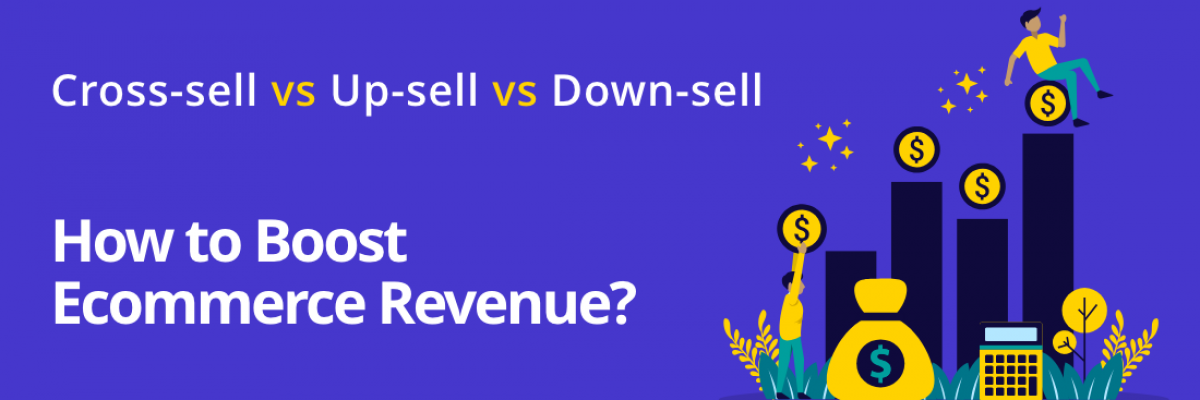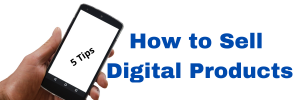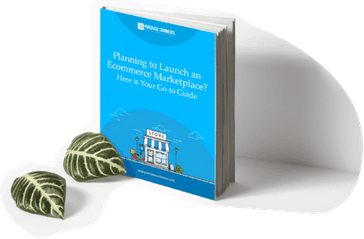Cross-sell vs Upsell vs Down-sell: Strategies to Boost Ecommerce Revenue
The most common objective of every business is to maximize profit. As an ecommerce site owner, you would be also trying new strategies to boost revenue by acquiring more customers. However, driving new sales is not the only ideal way of increasing revenues and profit.
The most profitable strategy is to boost your revenue by increasing your average transaction value because new customers usually come with more work and costs. For this purpose, large businesses usually combine some form of cross-selling and up-selling along with down-selling techniques to increase revenue.
It’s not surprising that considering these techniques not only increases the average amount a customer spends on your site, but it also improves the overall user experience – when used correctly.
As such, your goal with these techniques is to always provide your visitors with the most relevant product offers in a particular situation based on the information you have available.
Differences between Cross-sell, Upsell and Down-sell
Your product range and target audience will have a huge impact on the type of product offer you use, and also determine which approach works best for your store. In this blog, let’s take a deep dive into each of these sales techniques and how to effectively take advantage of them.
By knowing the difference between these techniques, you put yourself at an advantage of how to effectively use them as strategies to boost revenue.
What is cross-selling?
Cross-selling is the recommendation of any other product to be purchased in combination with the primary product. It is a sales technique used to get a customer to spend more by purchasing a product that's related to what's being bought already.
What is upselling?
The word "upsell" is applied to almost any case where you propose (or push) a product in addition to the one being purchased. It is a strategy to sell a superior, more expensive high-end version of a product that the customer already owns (or is buying). A superior version is a higher, better model of the product or the same product with value-add features that raises the perceived value.
What is down-selling?
Down-selling is the opposite of up-selling. It can be effectively used when a buyer has declined your product or service offer (sometimes by simply clicking the close button on the web page) and you offer them an alternative product that has minimum features at a lower price. This approach will give you a better chance to be accepted, and selling something is always better than nothing.
Example of cross-selling, upselling and down-selling strategies
To understand clearly the differences between these techniques, let’s take an example of mobile phone purchase in an online store.
As a cross-selling strategy, if a customer selects a specific model of a certain mobile brand, you can suggest them to a protective case for that particular model of phone. Now, that’s clearly very valuable to the buyer, since everyone wants to safeguard their new mobile phone, especially if they’re paying a large sum of money for it.
For upselling, if a customer selects a basic entry-level mobile phone model, you can recommend them to choose upgrades for the model. This upgradation could be the same model with additional storage capacity or extra accessories, or a better model with more advanced features. The key is that the product being offered has the same function as the original, but it should appear to be clearly superior with a higher perceived value.
And finally, as an example for down-selling, if a customer can’t afford a premium mobile phone, and intents to exit the check-out page, you can recommend a less-expensive alternative, such as last year’s model to continue shopping in your store.
How to boost ecommerce revenue with cross-selling, upselling and down-selling?
The most advantageous ecommerce sites combine cross-selling, upselling and down-selling to find the best way to maximize their profits with each buyer.
-
Cross-selling increases cart value and also increases customer equity. It helps to differentiate your brand from your competitors and enhances customer loyalty and engagement.
-
Upselling increases cart value. It results in a better profit margin and improves customer satisfaction rates.
-
Down-selling builds brand loyalty. It helps you access more buyers with varying budgets and allows you to make a sale even if a customer cannot afford a premium product.
How can I implement cross-selling, upselling and down-selling strategies?
After taking a look at the benefits of these techniques, now let’s take a deep dive into the most effective ways you can use them to increase the average transaction value in your store.
When it comes to implementing these techniques on your site, you can observe that there’s a very thin line separating the three approaches, and in most of the cases they are used together. Referring back to our mobile phone example, you could offer additional accessories and offer a less-expensive model on the product page of a premium mobile phone.
Therefore, it depends on the approach you choose. As a best practice, you can use your homepage, product pages, and cart page to promote products and offers by combining all the cross-selling, upselling and down-selling techniques.
Cross-selling strategies
Our ability to make a decision decreases once the number of choices increases. To solve this problem, bundling is quite often used along with a discount to increase the perceived value of the offering as it reduces decision complexity.
Also, as per reports, cross-sell gets up to 3% conversions when used on the check-out page. Therefore, you can use cross-selling techniques more on the check-out page to tap into impulse buying:
-
The products suggested for cross-selling must be at least 60% cheaper than the product added to cart
-
Aim for products that are easily forgotten: lenses for the camera, protective cases for mobile phones, lighter for a gas stove, etc.
8 ways to increase cross-selling
-
Supplementary products
-
Related products
-
Package deals
-
Products frequently bought together
-
Promote what the customer also bought
-
Promote additional items for (almost) free
-
Provide free shipping if bundled together
-
Personalization via Customer History
Upselling Strategies
For the purpose of making your customers to buy a superior product, you have to give more prominent space for the upsell products and display testimonials for them.
-
Promote your most sold or most reviewed products
-
Make certain the upsell products are not more than 25% costlier than the original product
-
Analyze customer personas and make relevant suggestions as per their interest
8 ways to increase upselling
-
Featured products
-
New arrivals
-
Seasonal offers
-
Daily offers
-
Bestsellers
-
Similar products
-
Products viewed
-
Products with customer reviews
Down-selling Strategies
The advantage of a down-sell is that even if a customer doesn't buy the product, you'd ideally like them to buy, and that way they are at least buying something if not the primary product.
-
As a store owner, you get some return for your sales effort
-
As a customer, they will hopefully have a good experience with your store
-
Since your customers are satisfied, they are much more likely to buy higher priced items from your store in the future
8 ways to increase down-selling
-
Discounts and deals
-
One-time-offers
-
On-site product positioning
-
Reduce cart abandonment
-
Communicate secondary offers on exit-intent
-
Special offers in email
-
Provide free shipping
-
Recommended products
Ecommerce revenue models: Best practices
To be successful in the ecommerce business, you have to adopt real-time marketing strategies by analyzing the market demand and customer personas. At Purchase Commerce, we have already implemented some of these best practices in our Single-Vendor and Multi-Vendor ecommerce platform to make your business a whole lot easier to boost ecommerce revenue.
If you wish to take a product tour of Purchase Commerce platform, you can book a personalized demo and our experts will get in touch with you.








